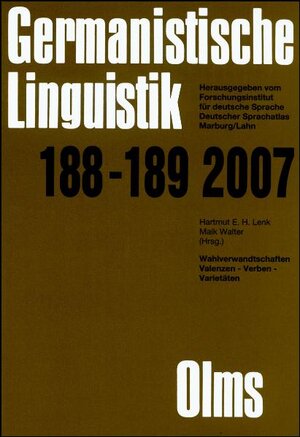
×
![Buchcover ISBN 9783487134116]()
Germanistische Linguistik / Wahlverwandtschaften - Valenzen, Verben, Varietäten
Festschrift für Klaus Welke zum 70. Geburtstag
herausgegeben von Hartmut E Lenk und weiterenUnter Wahlverwandtschaften verstand man im 18. Jahrhundert das spezifische Bindungsverhalten von Stoffen, eine Eigenschaft, die heute gemeinhin als Valenz bezeichnet wird. Auch in der Linguistik ist diese Vorstellung aufgegriffen und für den Bereich der sprachlichen Elemente zu einer eigenen Theorierichtung ausgebaut worden. Einer der prominentesten Vertreter der Valenztheorie ist der Berliner Sprachwissenschaftler Klaus Welke, dem die Aufsätze gewidmet sind. Ausgehend von den Valenz(en) ausgewählter Wortklassen, die den ersten thematischen Schwerpunkt bilden, werden im zweiten Teil Verben als die typischen Valenzträger untersucht und schließlich Varietäten der deutschen Sprache behandelt.
The term “elective affinities” was understood in the 18th century to refer to the specific combining power of materials, a quality now generally referred to as valence. In linguistics too this image has been taken up and has developed its own theoretical direction in the sphere of linguistic elements. One of the most important proponents of valence theory is the Berlin linguist Klaus Welke to whom these essays are dedicated. Starting from the valence(s) of selected classes of words which form the first thematic focus of the work, the second part examines verbs as typical carriers of valence and finally looks at different varieties of German.
The term “elective affinities” was understood in the 18th century to refer to the specific combining power of materials, a quality now generally referred to as valence. In linguistics too this image has been taken up and has developed its own theoretical direction in the sphere of linguistic elements. One of the most important proponents of valence theory is the Berlin linguist Klaus Welke to whom these essays are dedicated. Starting from the valence(s) of selected classes of words which form the first thematic focus of the work, the second part examines verbs as typical carriers of valence and finally looks at different varieties of German.


